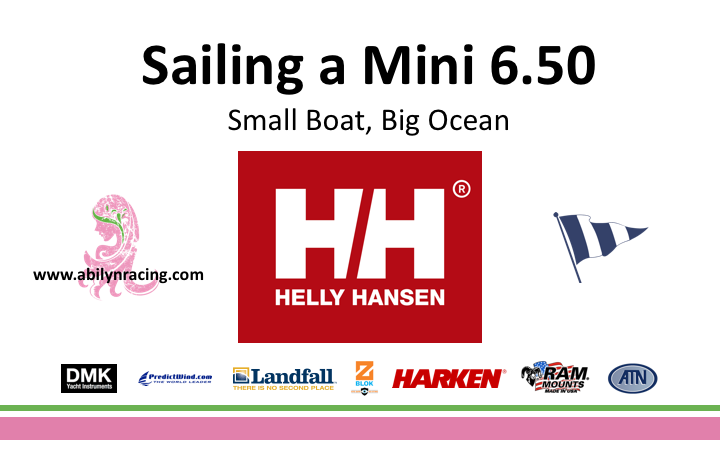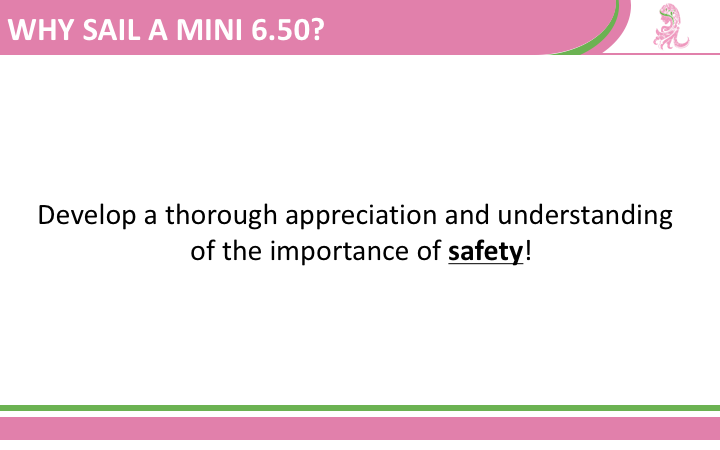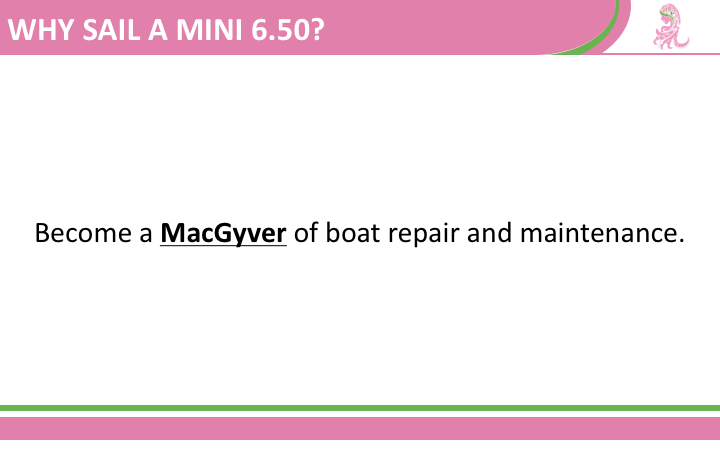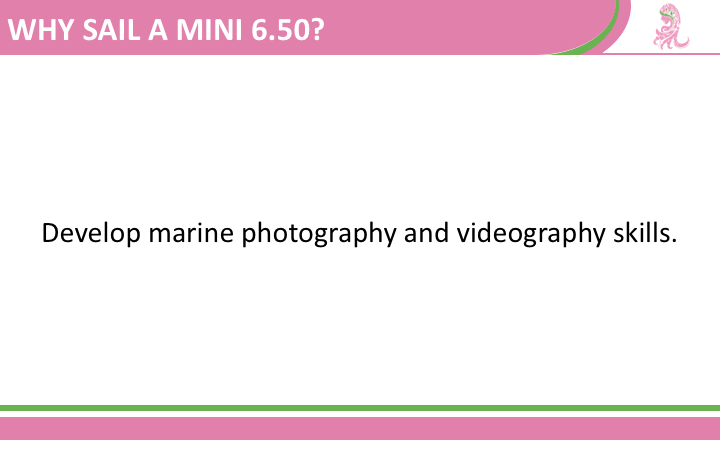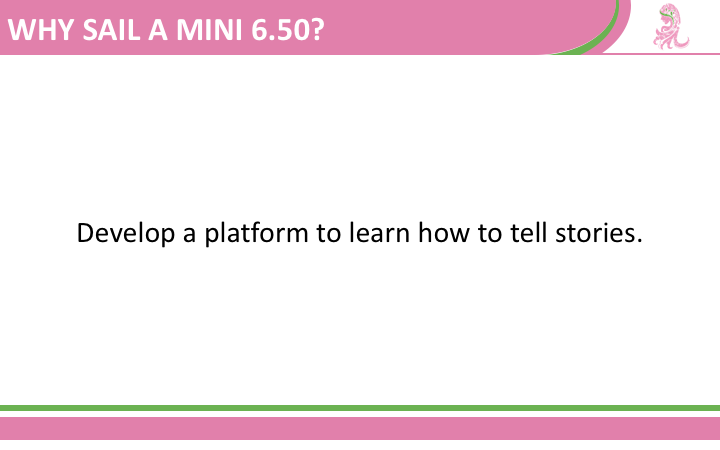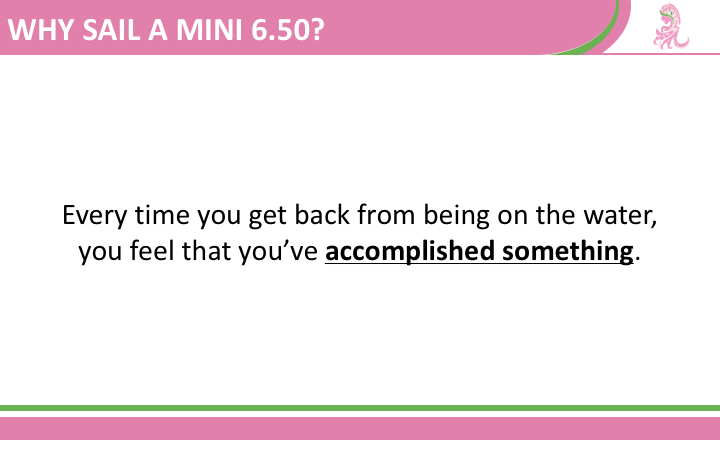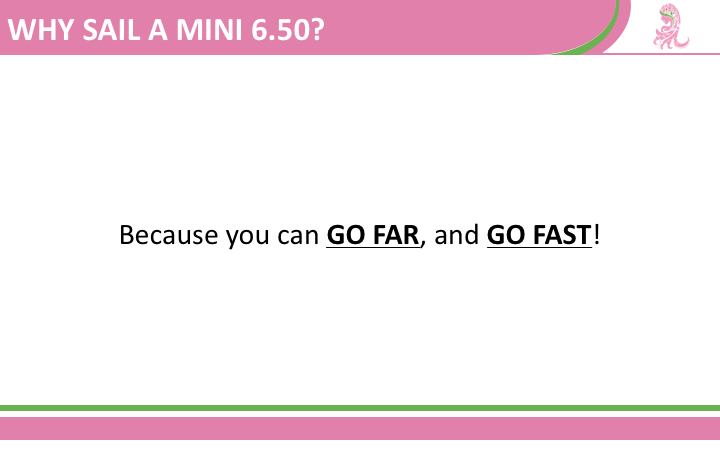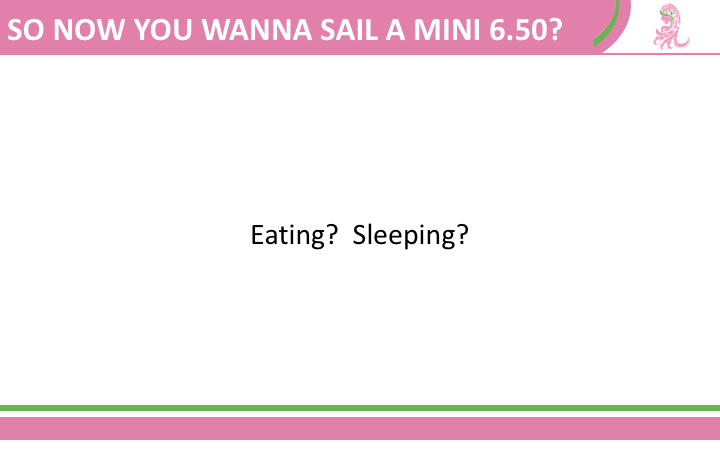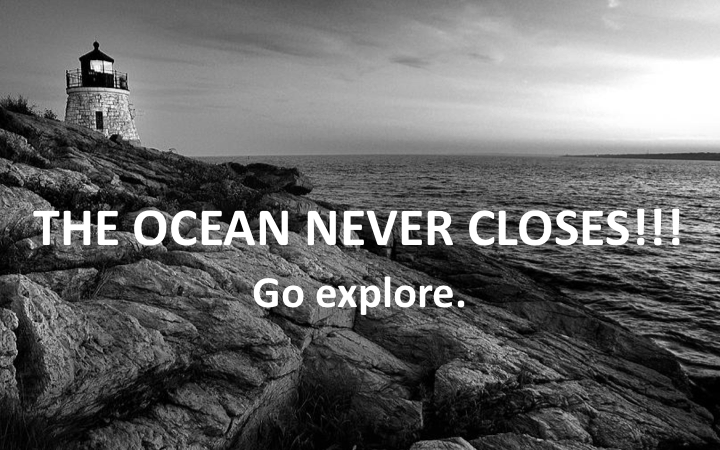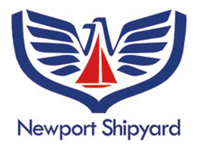Back in July, with "real life" obligations heavily competing for my attention, I felt a strong urge to crush miles aboard my 21-foot Mini Transat, Abilyn, because that's just what you do when you own a Mini Transat. But I was also motivated by something that pro sailor and co-founder of 13Fifty Racing, Jesse Fielding, said to me in Newport during the VOR stopover. He called me a name, and, in an anti-Marty McFly kind of way, I sought out to prove him right. In total, I sailed nearly 600 miles over these three weekends between my "real life" obligations to see if I had what it takes to be called a weekend warrior.
On May 6, I traveled up to Newport with my wife to see the Volvo Ocean Race. It had been just four days since I launched Abilyn for her third season on Long Island Sound. Fellow Mini sailor, Tony Leigh, and I sailed Abilyn from Brewer Pilots Point in eastern CT to Larchmont, NY--a delivery that included temperatures in the mid-30s (F), very little breeze, an outboard that died 20 miles out of the marina, and my first experience with SeaTow (which was great, by the way). But I digress...
Up in Newport, after catching a ride in Jerry Kirby's RIB (thanks to Mr. Clean and his connections) to see Abu Dhabi and Dongfeng gybe duel to the finish off Fort Adams, I had a chance to have coffee with Jesse Fielding and Will Gammell. Jesse and Will head up 13Fifty Racing, which, if you don't know, is the best shot we Americans have right now of seeing an all-American team in the next edition of the Volvo Ocean Race. But 13Fifty Racing is about much more than the next VOR--like OakCliff Sailing and the old All American Offshore program, 13Fifty is about expanding the distribution channel for American sailing talent.
During our java session up in Newport, Jesse says to me, "Josh, you're like the ultimate weekend warrior." Jesse is a pro. I am not. Although, I occasionally dream about what it would be like to sail full-time. At least according to America's Cup and Volvo Ocean Race veteran, Jerry Kirby, this would mean giving up life as I know it. I called up Jerry many years ago during a particularly bad day of desk jockeying, similar to how Bobby Bouche called up Captain Insano after a bad day of waterboying. The exchange went something like this:
Josh: "Jerry, what does it take to be a Volvo Ocean Race sailor?"
Jerry: "Josh, what do you do for a living?"
Josh: "I'm a lawyer."
Jerry: "Well, Josh. If you want to be a Volvo Ocean Race sailor, you have to stop being a lawyer, and go sailing."
Jerry's logic is undeniable. And I'm still a lawyer.
As I left Newport, I grinned from ear to ear because my VOR experience was nothing short of spectacular--out on the water to see the lead boats finish, great food all over town, a fun race village (by no means immersive, but fun), watching Team Brunel check out Comanche with one crew member announcing, "Too big for me!", and a top 10 spot (worldwide) in the Musto Grinding Challenge, which I'm guessing was not a competition in which many Aussie footballers participated.
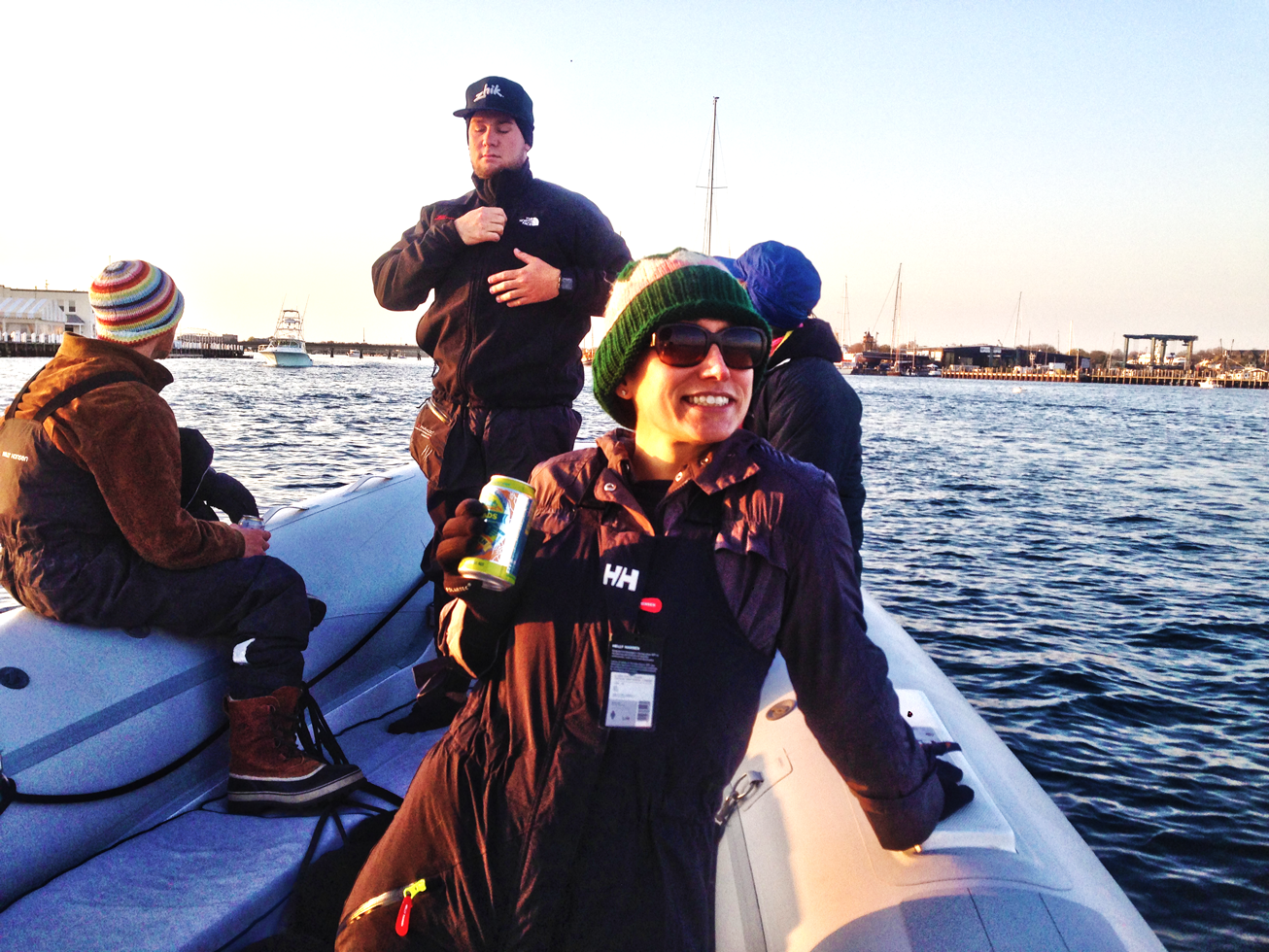
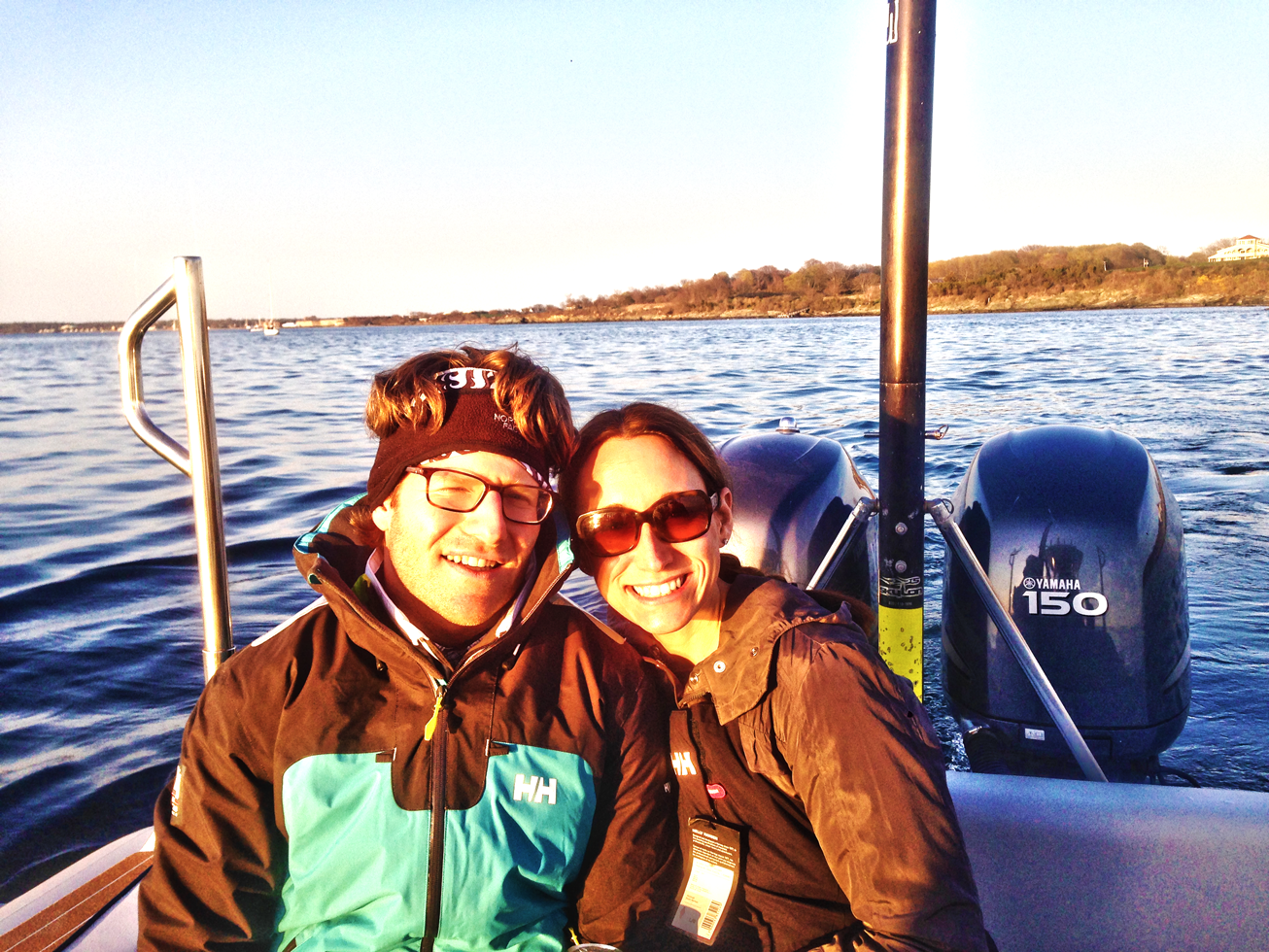
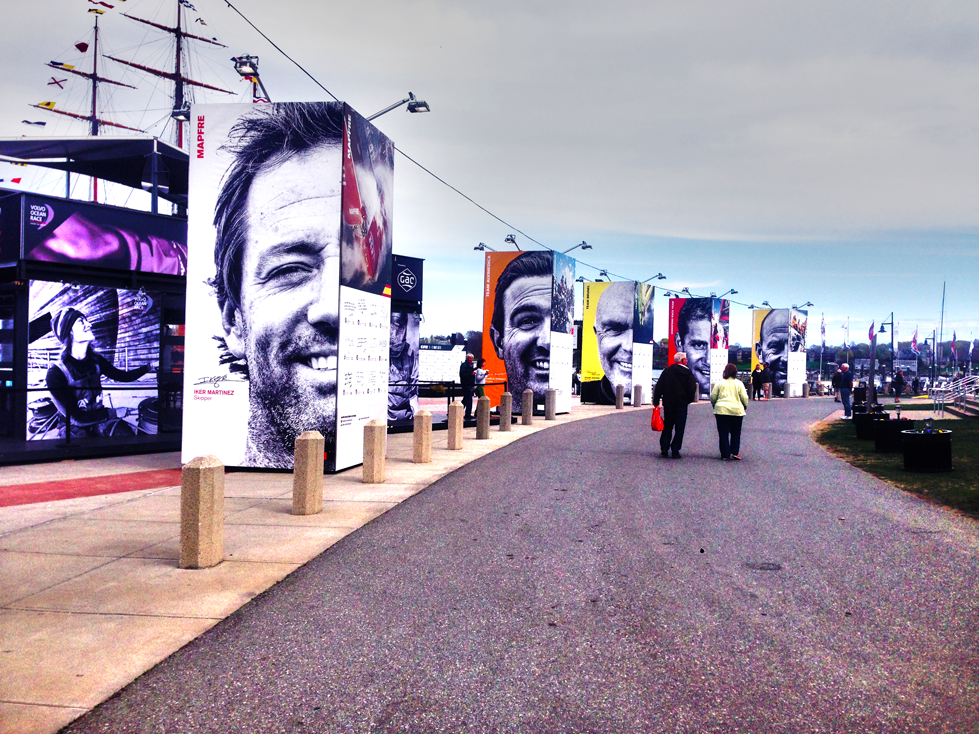
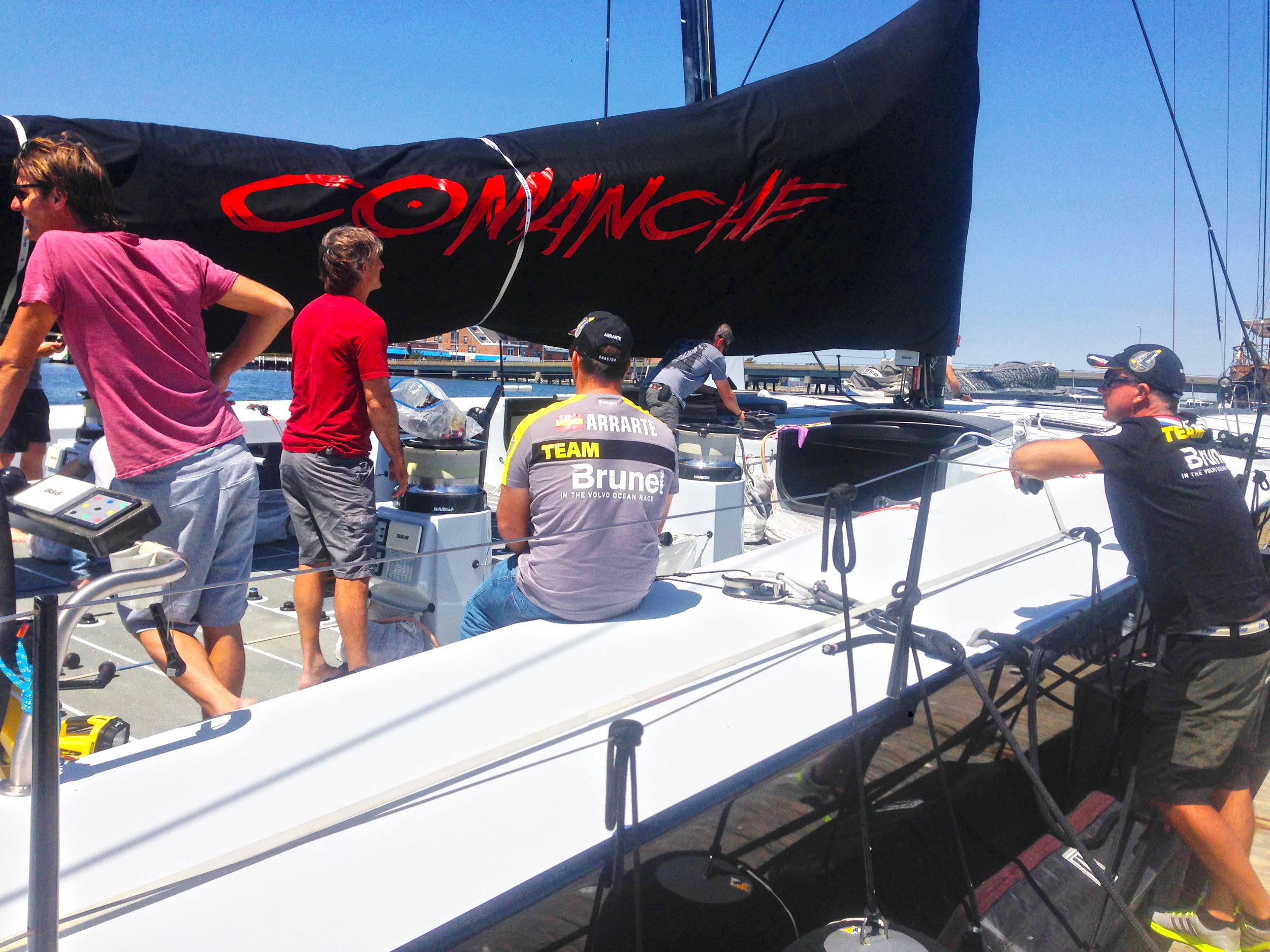
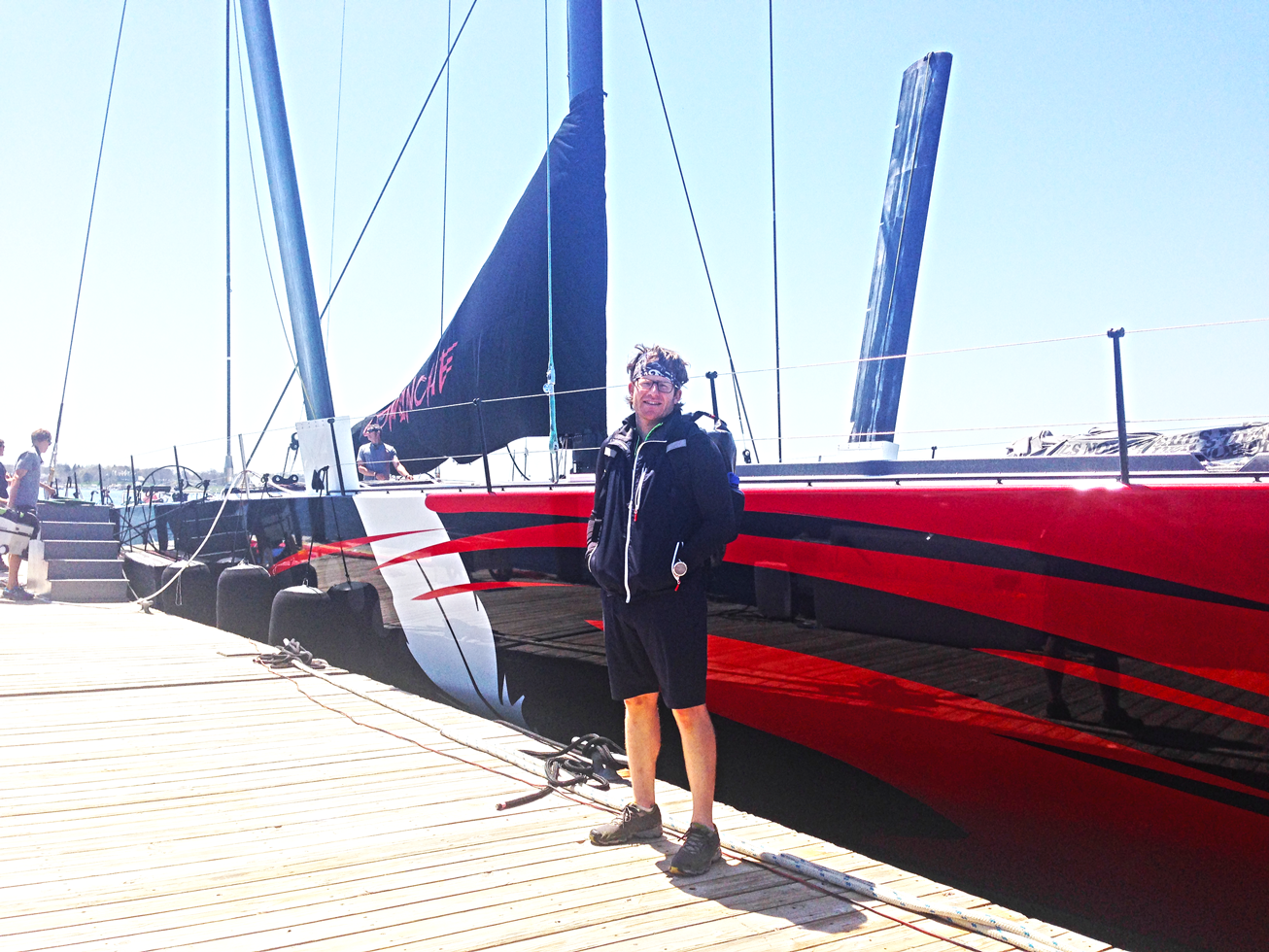
I imagine that my feelings toward the stopover were shared by many of the 124,999 other sailing enthusiasts who visited the race village. But as I drove back over the Newport Bridge, smiling, I also thought about Jesse's comment, and what it means to be a true weekend warrior.
Although Urbandictionary provides more than a few colorful definitions (relating mostly to binge drinking and drug abuse), the most general definition of "weekend warrior" appears to be as follows:
However, in my view, there's more to a weekend warrior. A true "weekend warrior" is not somebody who simply participates in an activity in their spare time, but rather is one who espouses a higher level of dedication. A true weekend warrior is one who:
- strives to maximize the amount of spare time available to participate in an activity while at the same time remaining dedicated to his/her "real life obligations (which are usually focused on career and family);
- desires to excel at that activity, not just participate; and
- needs to engage in the activity as a core component of their existence.
These principles can be distilled into a single concept--passion. Indeed, for one who possesses this passion and who also places a high value on "real life" obligations, living the way of the weekend warrior--notwithstanding the term's pejorative origin--is an unequivocal expression that neither pursuit is trivial, and that each is undeniably essential to their happiness.
Now, one caveat. Under this definition, for example, Hap Fauth, owner of Bella Mente, could be considered a weekend warrior. But it would seem almost dirty to refer to Mr. Fauth as such. The term "weekend warrior" naturally carries a socioeconomic connotation, the limits of which are beyond the purview of this "blog" post. But I will venture to say that nobody who owns a boat in the Maxi 72 Class can or should be considered a "weekend warrior."
Folks like Peter Beardsley, Doug Lynn, Guy Rittinger, and Tristan Mouligne--these are true weekend warriors; ordinary folks with non-sailing day jobs who are passionate about the sport and who push themselves to be better sailors by doing what they can to maximize their time on the water (and who obviously do not own a boat in the Maxi 72 Class). Being a weekend warrior is the ultimate badge of honor for the everyday, non-professional sailor.
So when Jesse Fielding pinned this badge upon me, I naturally thought about whether I was worthy. I thought about whether I was succeeding in balancing my "real life" obligations with my passion for sailing and my ambitions for the Mini. The fundamental ability for me to balance sailing with "real life" has been made possible only because of the system my wife and I have employed in our family. Simply put, we support each other. However, during the 2015 season, with a career transition, that balance tipped in favor of "real life" when I chose to focus on work and forego my bid to race Abilyn to Bermuda and back as part of the 2015 Bermuda 1-2 Yacht Race, a race for which I qualified in 2014, and which was my primary goal for the 2015 season.
But a series of weekends in late July gave me a chance to rebalance the scales; three weekends, two back-to-back offshore regattas with starting lines 150 miles apart, 255 miles worth of sailing just to get to those starting lines, and work and family responsibilities mixed in between.
After coordinating logistics with my wife, who, to the surprise of some, fully supports my sailing ambitions and Mini adventures, I set off on July 18, a day after I gave a presentation on Mini sailing at the Storm Trysail Foundation's Junior Safety at Sea Seminar, where I stood on my soap box and told the juniors to go explore, for the ocean never closes.
Saturday, July 18
Outward Bound
The plan was straightforward: Ride a 15-20 knot westerly from Larchmont, NY to Newport, RI to get ready for first of the two regattas, the New England Solo/Twin Championship, where I would be competing in the solo/spinnaker class. At best, the transit would be a 120-mile sleigh ride downwind. At worst, a 120-mile motor on a 2.5 hp Yamaha short-shaft outboard with a 0.25 gallon inboard gas tank that requires manual refills every 50 minutes. The actual passage was somewhere in between, consisting of a nice downwind ride where we reached speeds of 13-14 knots, jib reaching while my co-skipper completed some "real life" work in the area of structured finance litigation, and motoring on glass while lounging on the Fatboy beanbag chair and chomping on jerky.
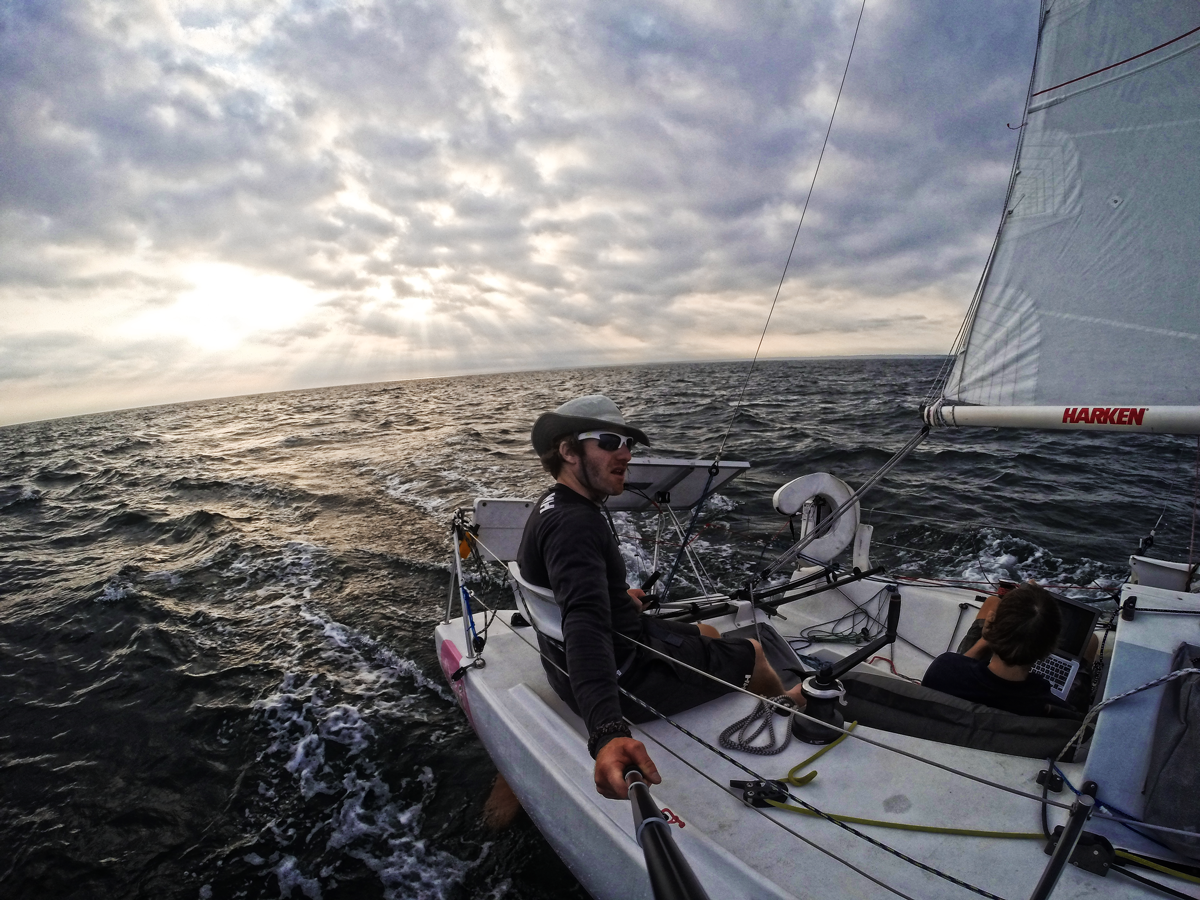
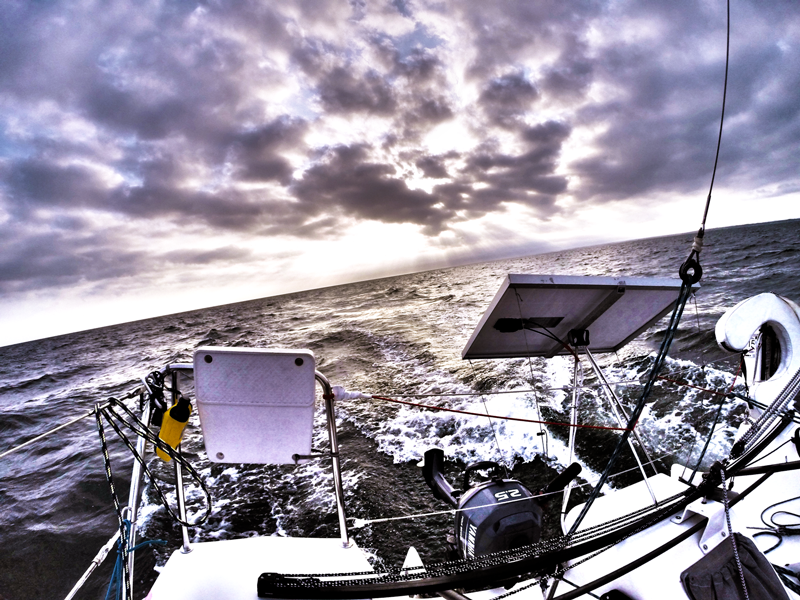
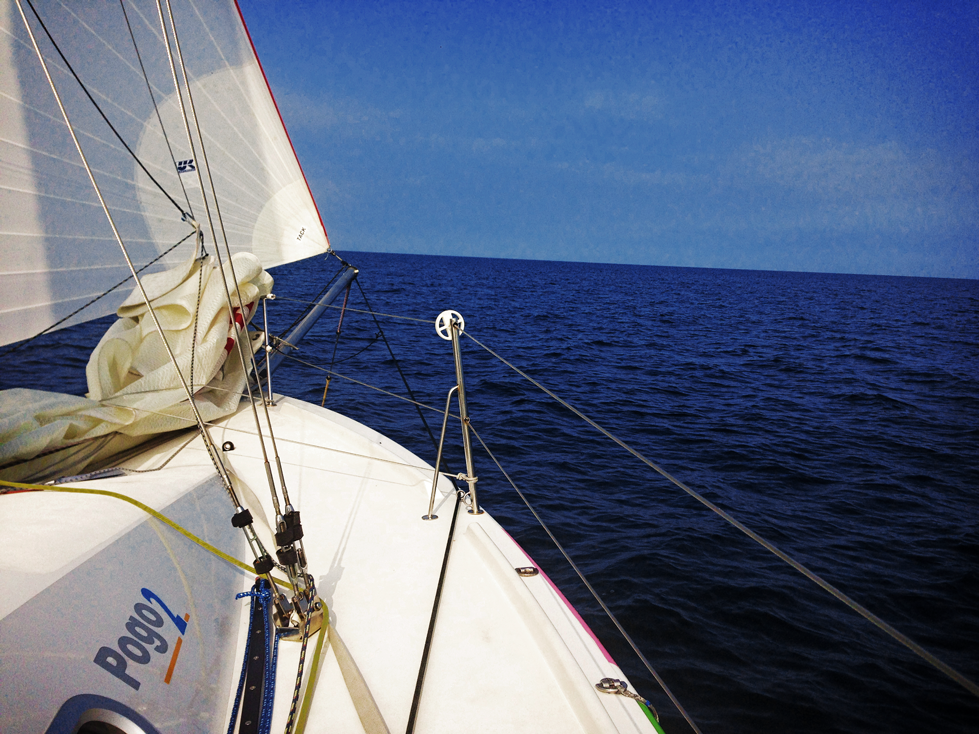
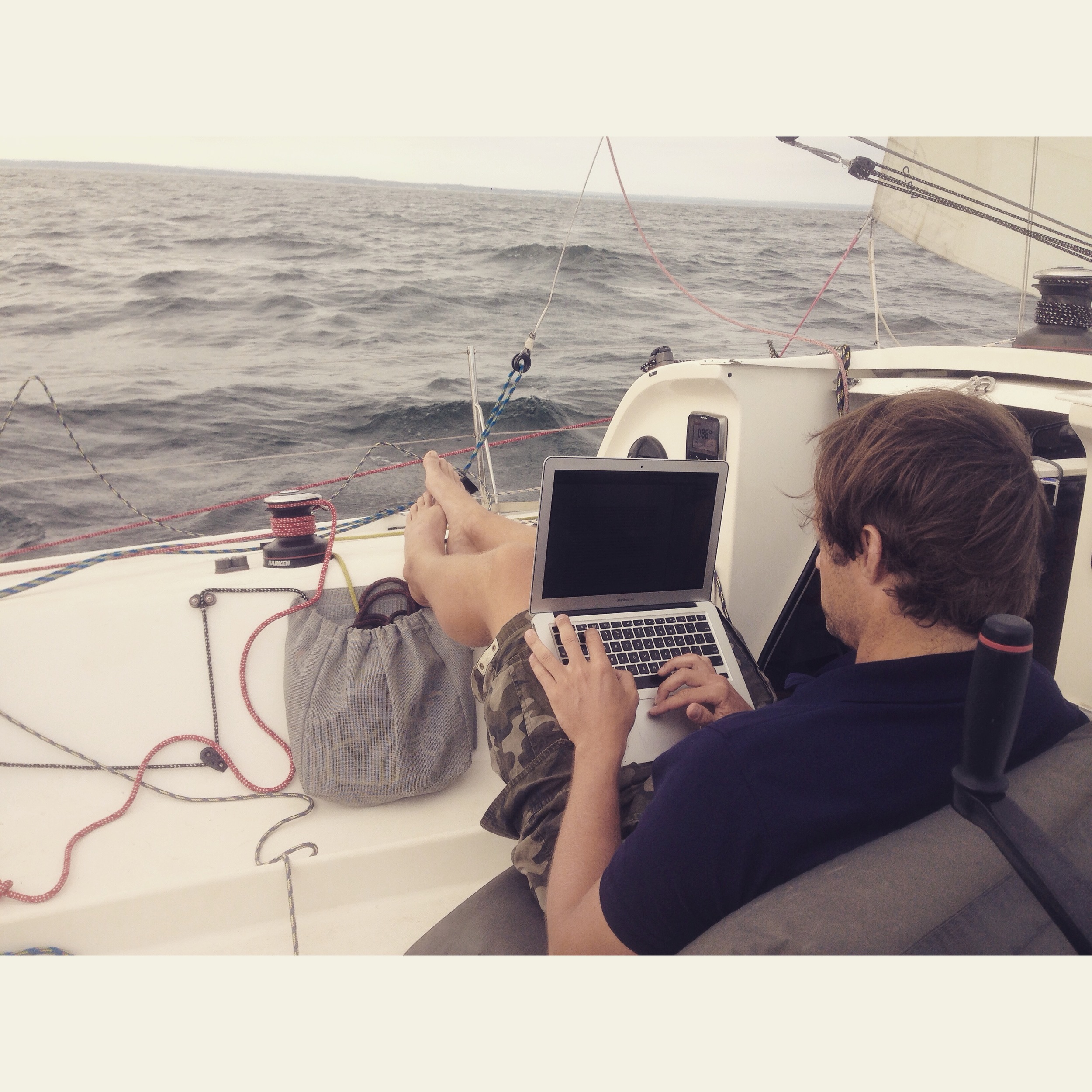
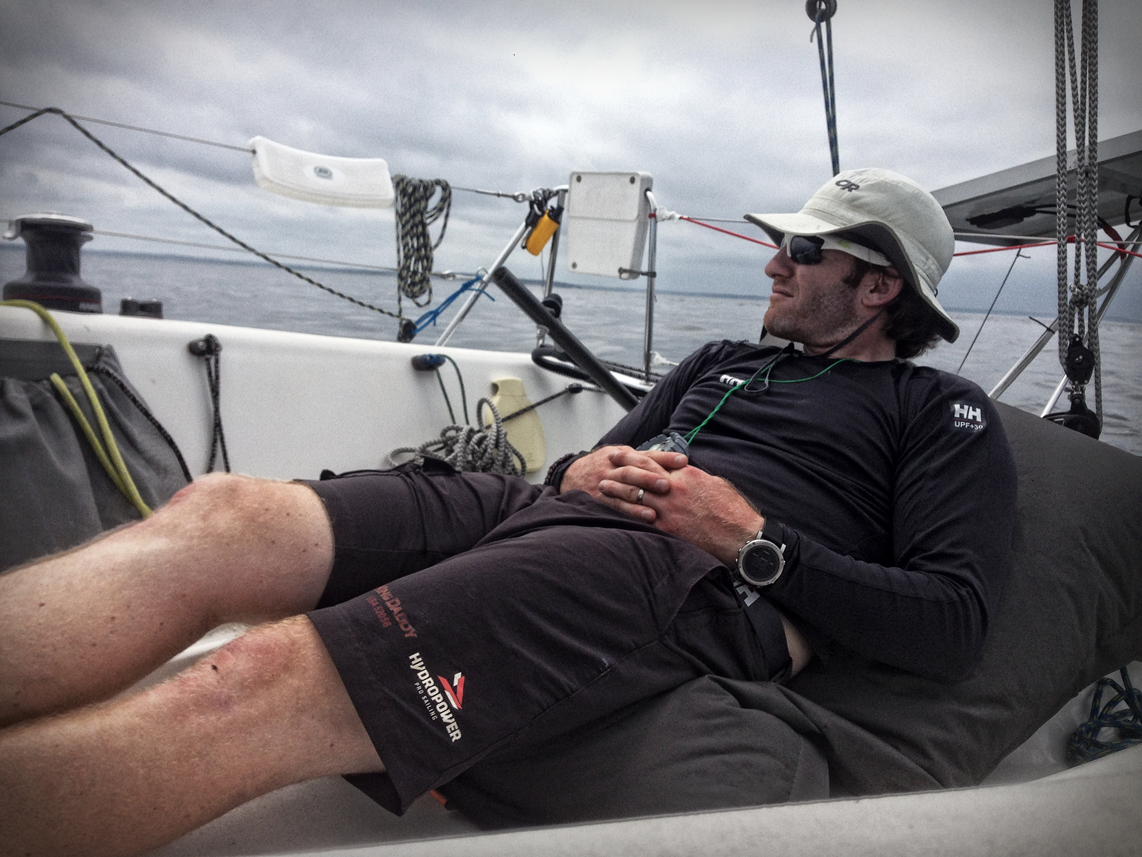
The highlight of the transit was the aural and visual display we were treated to while blasting against adverse current with the large Code 2 kite up through the bottleneck known as The Race. The scene was nothing I had experienced. From all points of land in my field of vision, both on the Connecticut and Long Island shores, fireworks filled the moonless sky, acting like a radar to show us the silhouette of Fishers Island, Orient Point, and surrounding shorelines. And, while the CT fireworks were illuminating the kite enough for me to check the telltales without a spotlight, the proximity of the charges being launched on Long Island's north shore let us feel the shockwave of the explosions, which in turn amplified the sound of the hull pounding through the tidal rips. "Like sailing through Beirut," noted a friend. The same.
Sunday, July 19
Newport Arrival
Twenty-two hours after leaving Larchmont, we ghosted into Narragansett Bay under a blanket of heavy fog, and tied up at the Newport Yacht Club where Abilyn would rest for five nights before the Solo/Twin the following weekend. After lunch at Newport Shipyard and giving my friend a quick tour of Bannister's Wharf, we were on our way back to NYC--via the Mega Bus to New Haven, Metro North to Grand Central, and NYC subway back to our respective homes--mine being across the East River in this neighborhood of Brooklyn.
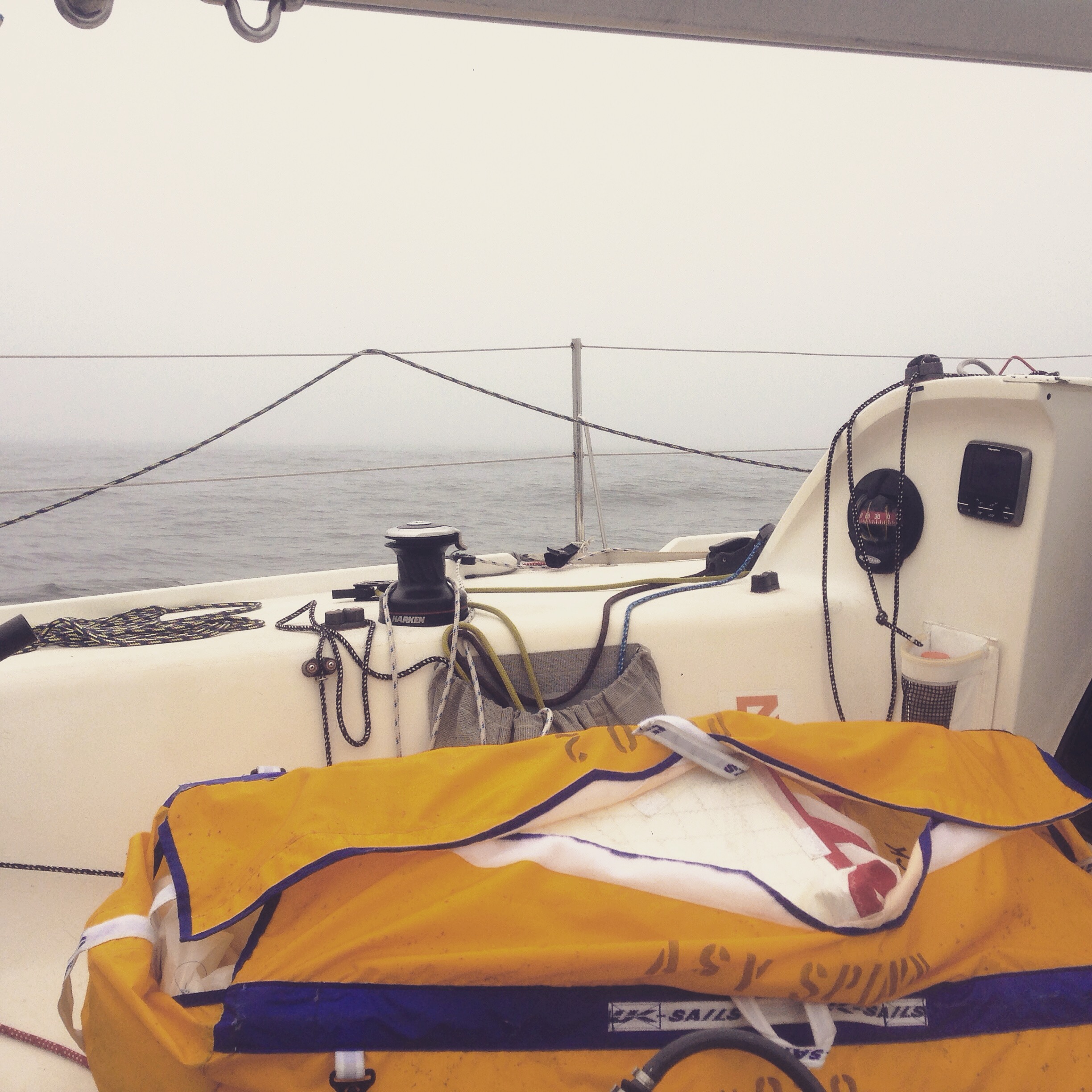
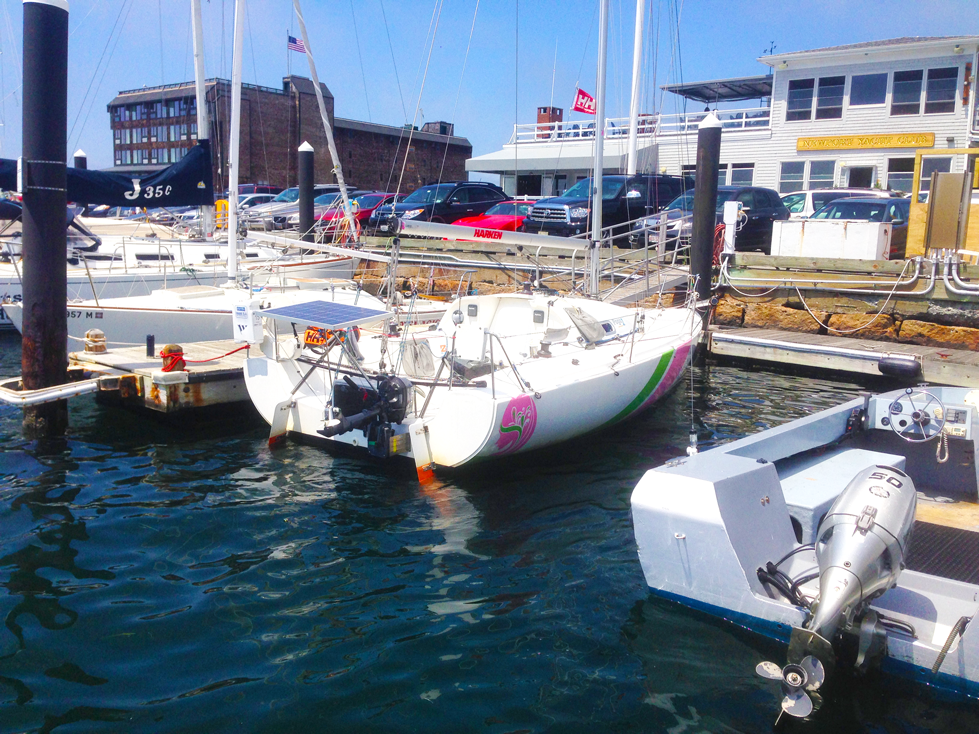
Monday-Wednesday, July 20-22 -
Life
Non-sailing responsibilities. Wife, two kids, two dogs. Work. 3 AM nights to compensate for the days I'm out of the office.
Thursday, July 23
Back on the Road
On the road back to Newport via rental car. What should have been a 3-3.5 hour drive turned into a 7-hour test of patience, most of which consisted of just getting out of the City. Once parked at Newport Yacht Club, I immediately began readying the boat for the regatta. Rigged her up real nice, hit up West Marine and the grocery store, studied the tides and currents, dined with friends on Goat Island, and of course, attended to more "real life" work--an activity that was made sublime by the sound of "yazz flute" being played somewhere in Newport.
Friday, July 24
The New England Solo/Twin Championship
70 miles around marks in the Rhode Island Sound, overnight, single-handed. After some last minute rigging, I headed out to the start around 1100, just on the other side of Goat Island. At 1200 (30 minutes before my class start), the light northerly was still holding despite the forecast for a late-morning southeasterly. So I readied the kite for the start. My class consisted of me, a Pearson 33, and a 50-foot Hinckley Sou'wester--despite being 12 feet shorter than the Pearson 33, Abilyn rates the same. With the pole fully articulated in the pre-start, I hit the line on time and immediately filled the large Code 2 kite, well before either of my competitors knew what was going on.
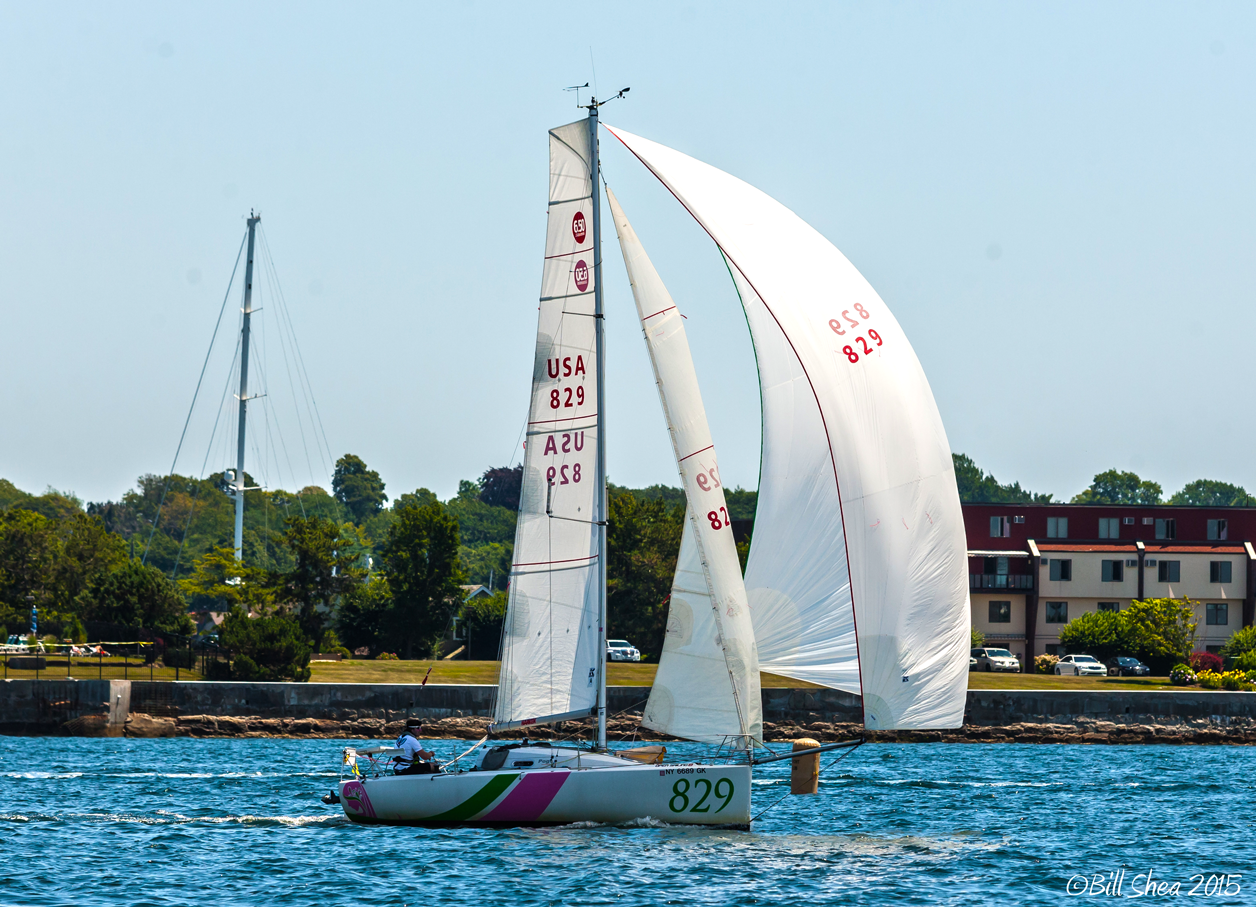
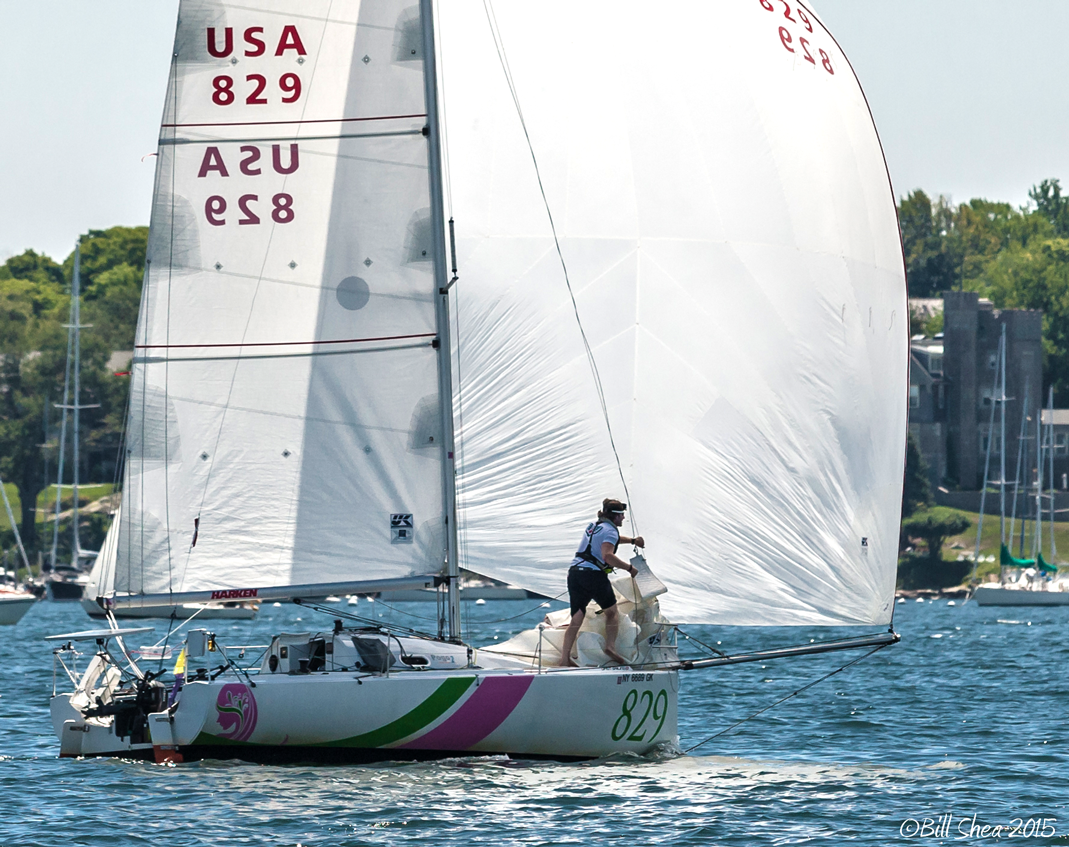
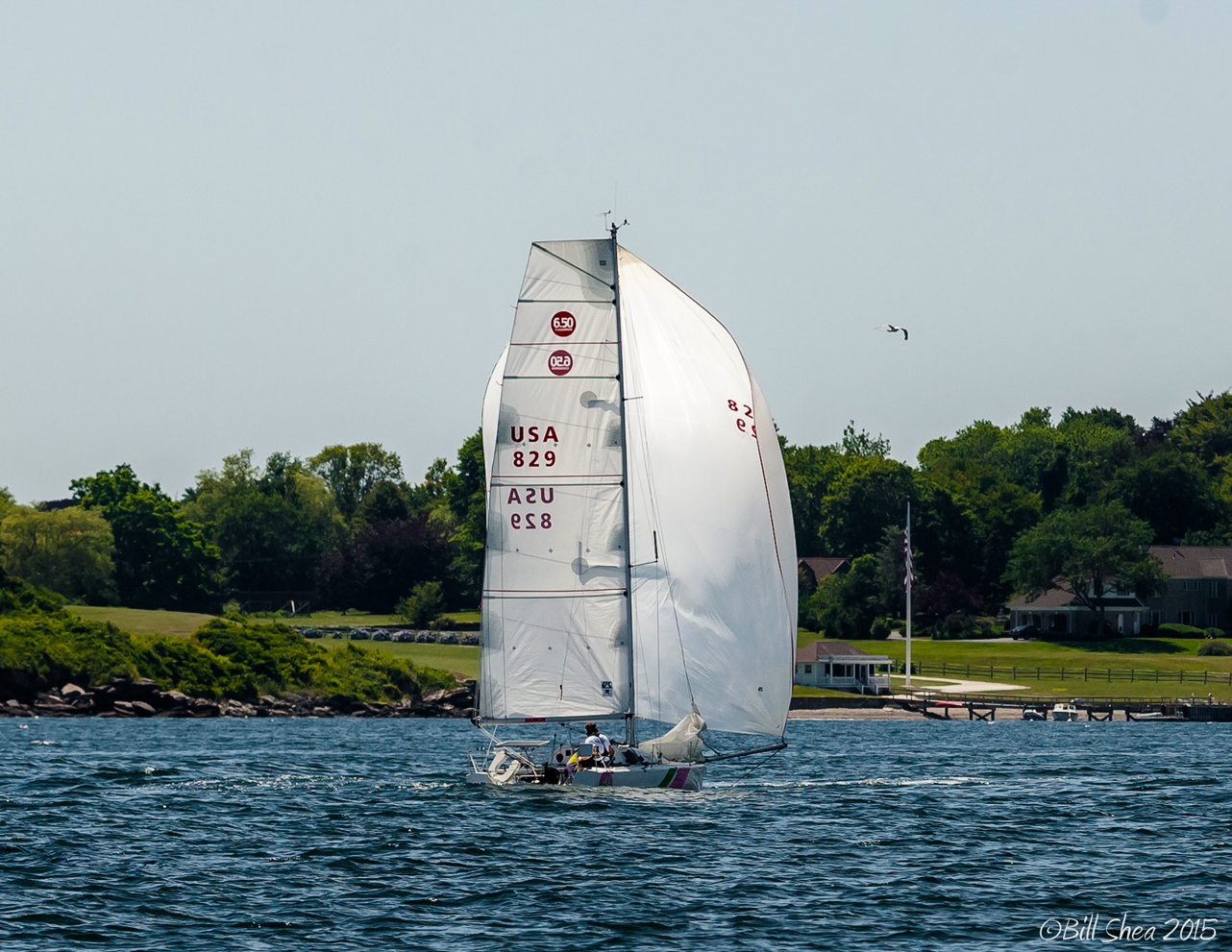
Gybing down Narragansett Bay in light air and heavy powerboat traffic proved...frustrating. But I powered through each solo gybe, kept the boat moving, exited the bay in first, and even managed to catch up to Frogger, the other Mini sailing in the event (albeit in the double-handed class that started ahead of me). As I passed Castle Hill, I took a brief moment to appreciate that I was sailing my boat for the first time in this storied bay, and then quickly switched from downwind mode into upwind mode as the northerly shut off and the southeasterly filled in. Kite down. Genoa up. I sailed the six-hour leg from Castle Hill to "1BI" just off Block Island in pristine upwind conditions, 10-14 knots and flat seas. Calling it a beat seems improper.
Shortly after rounding "1BI", I again popped the Code 2 and headed downwind to Buzzards Bay Tower at 10 knots of boat speed. However, the swift transit across Rhode Island Sound I had hoped for needed to be put on hold because what I saw rolling over the race course--a cloud formation that looked like the hand of the Devil reaching out of the clouds to taunt unsuspecting yachtsmen and flick off masts. Boats ahead of me were dropping sails. I immediately did the same. One competitor radioed the fleet, letting everyone know of the reports of hail, lightning, and 50-knot winds to the north. Spinlock PFD, on. Helly Hansen Aegir ocean gear, on. Tether, clipped in.
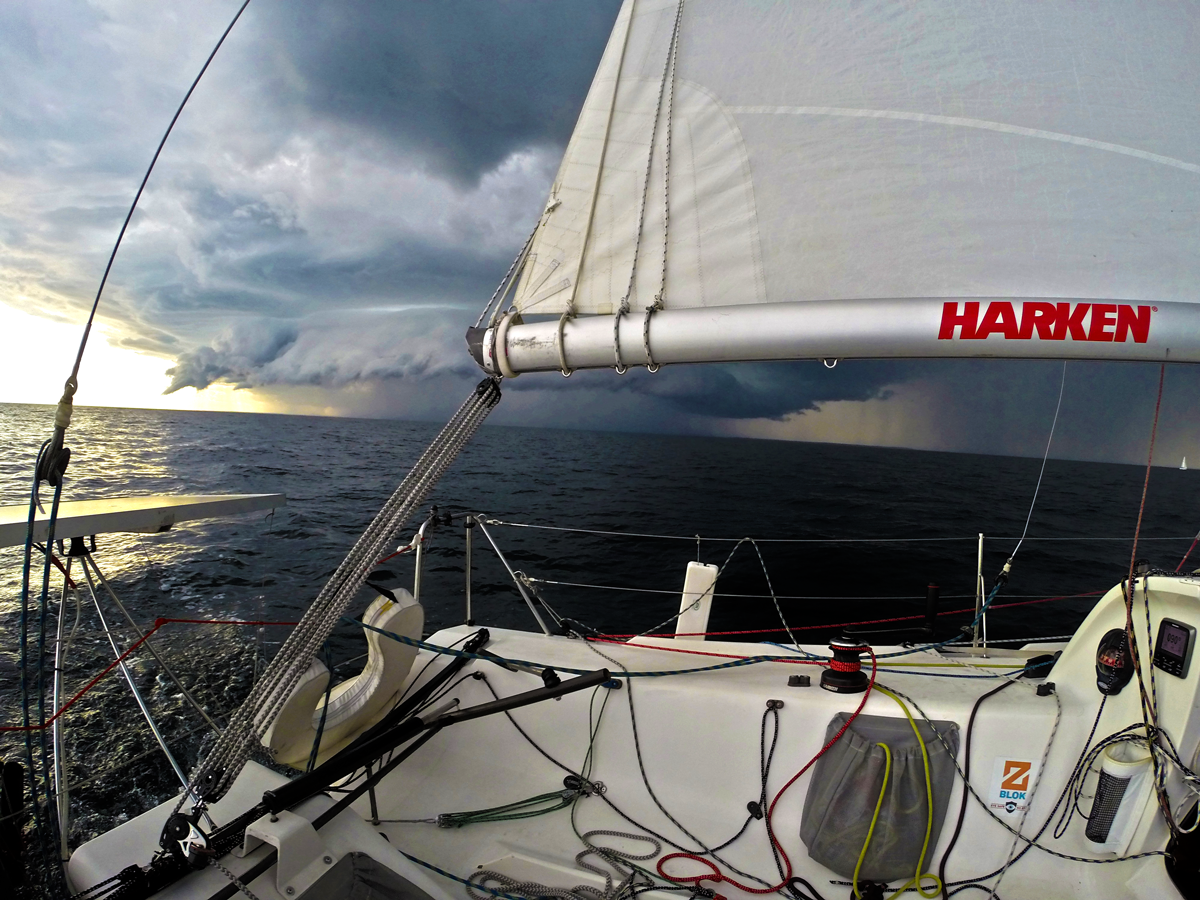
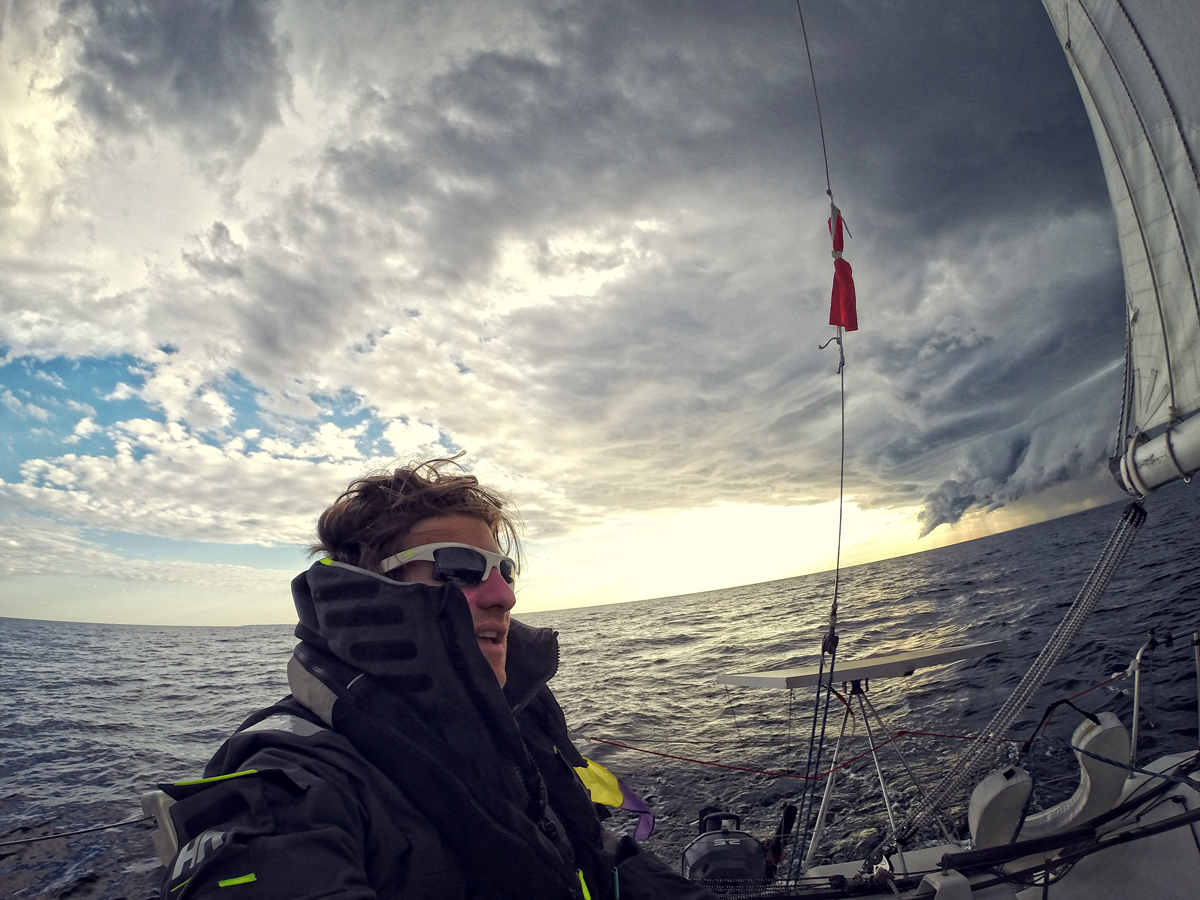
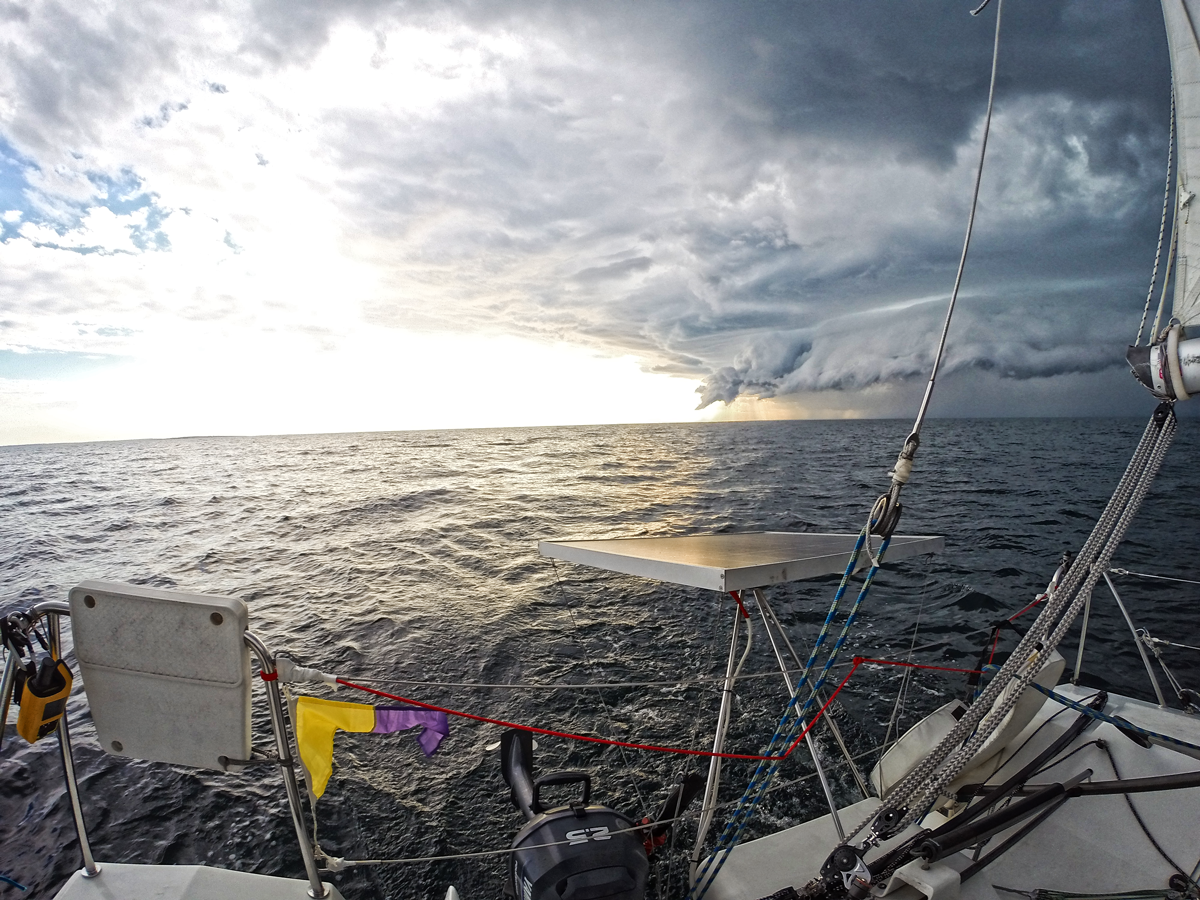

As the cell moved south over Rhode Island Sound en route to Block Island, the skies opened up, bringing rain, thunder, lightning, and a very brief period of 25-knot winds. Not before too long, the cell cleared me astern. I felt comfortable re-hoisting the kite, and resuming the leg to Buzzards Bay Tower, which, given an unfavorable wind shift, was now directly downwind.
Abilyn hates to sail directly downwind. So, as night set in, I found myself gybing back and forth across the shipping channel, picking off other race boats and avoiding commercial traffic. Abilyn and I were dancing--a single unit silently moving in unison through each maneuver. Every gybe felt more satisfying than the last, and the light of Buzzard Bay Tower kept getting brighter with each passing minute.
At around 2200, I rounded Buzzard Bay Tower next to three much larger boats, and began the upwind leg back across Rhode Island Sound. For the rest of the night, I played wind shift after wind shift to minimize my distance to the finish. Given the shifty conditions, I dared not sleep. But maintaining wakefulness and alertness proved difficult, although not unexpected. Before the race, I stocked up on something called Military Energy Gum, which packs 100 mg of caffeine per piece. The instructions were straightforward: Chew the gum until it tastes bitter. If you don't feel alert in 15 minutes, pop another one. Rather than going down below to brew some coffee with the JetBoil, I popped some MEGs. Two pieces set me up nicely for four hours. I was good for the rest of the night.
Saturday, July 25
Turn and Burn
After battling an ebb tide in light air, I crossed the imaginary finish line off Castle Hill at 0714 Saturday morning--first in my class to finish the 70 nm course, second on corrected time (that Pearson 33 got me). Rather than ignite flares as perhaps my European Mini-sailing compatriots might have done, and no doubt will do after completing the upcoming Mini Transat Iles De Guadeloupe, I opted instead for a GoPro selfie to mark the occasion.
The next part of the plan was simple: sail back to the Newport YC dock, pick up a crew member who traveled all the way from Tacoma Park, MD (via an overnight train to Providence and bus to Newport) for the next leg of the journey--one whom I had never met--and then turn and burn. Within three hours of finishing the Solo/Twin, and with zero sleep the previous night, I once again sailed out of Narragansett Bay. The next stop for Abilyn was Sheepshead Bay, Brooklyn, NY--135 miles away--and the start of the Around Long Island Regatta (ALIR) in only five days time.
With a quick tutorial, my double-handed partner learned Abilyn's systems and tendencies quickly, so I felt comfortable putting up the big Code 2 kite. Although weary of an unknown sailor taking the reigns, I had no choice. I needed to sleep. So I crawled into Abilyn's belly and settled into the Fatboy beanbag chair for a decent nap. Without faltering, Abilyn gracefully carried us down the Rhode Island coast under spinnaker towards Point Judith, and then on to Montauk Point and the Atlantic Ocean.
By late afternoon, we had passed through the fishing traffic off Montauk point and entered the ocean. Over the course of the night, we stayed relatively close to the southern Long Island shoreline, in part to keep away from commercial traffic entering and exiting New York Harbor. My partner and I settled into our three-hour watch cycles, and were each able to keep the boat moving towards Rockaway Point, utilizing every combination of sail that we could set on Abilyn.
Sunday, July 26
Brooklyn Arrival
As the sun cleared the horizon on Sunday morning, we found ourselves motor sailing to keep boat speeds above six knots. Plus, I wanted to catch Frogger, the other Mini Transat 6.50 that left Narragansett Bay three hours before us, and whom we'd be battling in the upcoming ALIR. By 1300 Sunday afternoon, after sailing and motoring through unfamiliar, shoal-lined channels in the very shallow Sheepshead Bay, we were tied up and offloaded, trying our best to tolerate the land sickness ashore. My regular co-skipper, Sam Cox, who was unable to sail the leg from Newport to Brooklyn because of his own "real life" obligations, picked us up in his vintage Toyota FJ cruiser. Speeding down the Belt Parkway and Brooklyn-Queens Expressway without a wind shield marked a nice finish to a successful delivery.

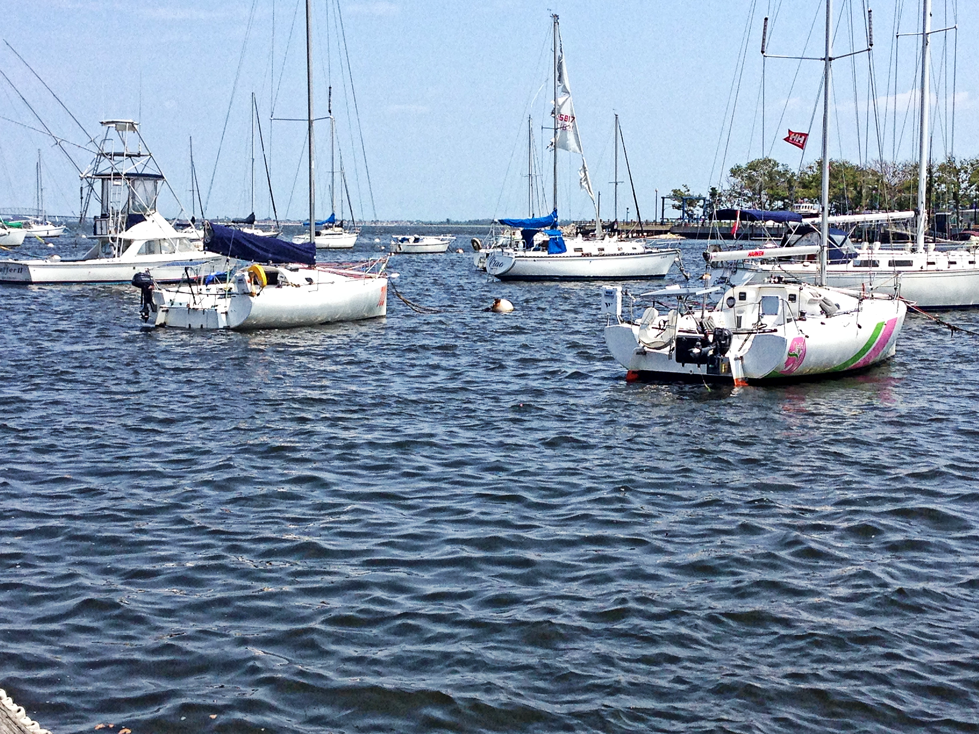
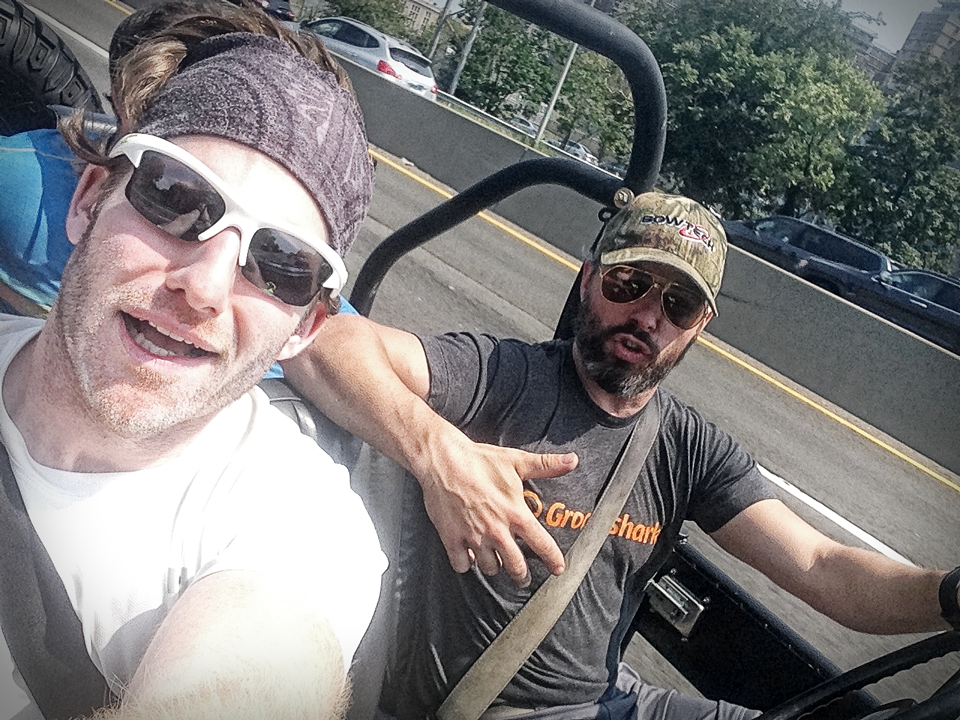
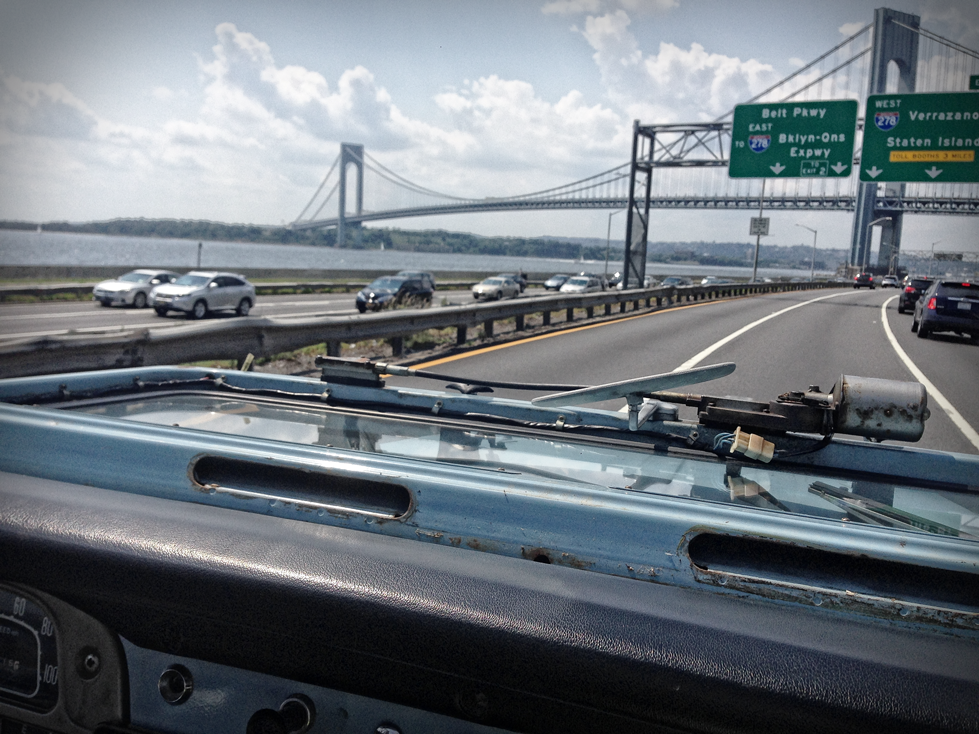
Monday-Wednesday, July 27-29
More Life
Non-sailing responsibilities. Family. Work. More 3 AM nights.
Thursday, July 30
The Around Long Island Regatta
A race around the largest and longest island in the contiguous United States, the course takes competitors 190 miles around the island, with an ocean start and finish in Long Island Sound. It was an early morning as I was on breakfast duty--my identical 5 1/2 year-old girls demanded chocolate chip pancakes. After they were squared away with adult supervision, I cabbed it to my co-skipper Sam's apartment in Park Slope, and together we Ubered to the Sheepshead Bay Yacht Club, where Abilyn had been moored since arriving via Newport. Sam and I didn't talk much. He was checking business e-mails. I was on an hour-long conference call. When we arrived in south Brooklyn, we immediately got the boat race ready, including rigging up all three reef lines as we were expecting 25-30 knots at the start. But first we had to get to the start.
Leaving the mooring field, the serenity of the light zephyrs in front of the yacht club gave way to a brick wall of breeze--25 knots right on the nose. Coincidentally, we were able to make only 2.5 knots speed over ground with the 2.5 hp short-shaft Yamaha outboard hanging off Abilyn's transom. We needed to maintain 2 knots SOG to get to the starting line on time, four miles away. No rush.
But as we headed toward open ocean, to an area of the bay not shielded by Rockaway Point and its southwestern breakwater, we were met with steep 3-5 foot waves. Our SOG dropped to under a knot, and the water intake on the outboard regularly surfaced out of the water causing the engine to scream bloody murder. Our start was in two hours, but the starting line was now more than four hours away. I was visibly frustrated, not because of our current predicament, but because it could have been avoided if we simply arrived at the boat earlier in the day; after all, we knew the breeze around the time of the start would be on the nose coming out of Sheepshead Bay.
With the boat not making much headway, we seemed to have only two options: Hoist the main and try to short-tack the narrow channel lined by a beach on one side and a reef on the other, or reverse course and take a much longer route out of Sheepshead Bay, but one that we likely could sail. We chose option three--attempting to flag down a bigger boat for a tow.
A few boats that passed by us did just that, passed by us, without even an acknowledgment that we needed assistance. One boat that we flagged down was comprised of sailors that know something about assisting others in need--the sailors aboard Tenacious, representing the U.S. Naval Academy. After they accepted our request, we maneuvered close enough to receive a tow line, and then secured the tow line to Abilyn's mast.
Tenacious engaged and began pulling us through the nasty sea state. We were getting slammed with green water while trying to steer just off Tenacious' aft starboard quarter. But within an hour, and about 45 minutes before the gun, we had arrived in the starting area, had our sails up, and were checked in at the RC boat. I was overwhelmed by the Navy sailors' exhibition of Corinthian spirit, not to mention skill and patience in such difficult conditions. And what luck to have Navy sailors nearby when we needed assistance!
As the gun sounded for the start of our division, we crossed the line to windward of our competition, the Mini 6.50 Frogger, sailed by friends Josh Owen and Miles Abrams, and began the reach towards Montauk Point on starboard tack. With the breeze holding around 23-25 knots, both Minis started with a double-reefed main and 110% jib. Feeling underpowered, we shook out a reef and quickly pulled away from Frogger as we jib reached at 100-110 TWA at 9-11 knots SOG down the southern Long Island coast--my second transit of this coast in five days.
For the next 30 miles, with Frogger behind us but still in our sights, Sam and I had an ongoing discussion whether or not to launch a kite. Our TWA was much too close to the breeze to put up a kite in this wind strength. But, as Sam occasionally saw 125-130 TWA when he glanced at the instruments, he pushed for the kite--nearly berating me into seeing his view of the world, which is to say, opportunistic. In business, Sam is an entrepreneur and has a healthy appetite for risk. I, on the other hand, am naturally risk averse, hence my decision to become a lawyer in "real life." With none of the boats ahead of us going for kites, I wasn't quite ready to give into Sam's faux-bullying. So we held off until reaching Fire Island where we were able to bear off a bit and open up the TWA, putting us well into kite territory.
Upon confirmation from Sam that he was ready on the tiller and mainsheet, I hoisted the masthead halyard locked into the Code 5. As I hauled on the halyard from pit, I reminded Sam NOT to trim the spin sheet. MADE! Kite trimmed. Jib down. Baby stay set hard!. Side note: In retrospect, we should have set the kite sooner.
Hoisting the kite in this breeze is like adding Liquid Schwartz to the gas tank of a flying Winnebago. 13 knots of boat speed. 14 knots. 15 knots. Space tracks. On Abilyn, you can determine downwind boat speed based simply on the symphony of harmonics she generates off the breeze. When Abilyn is on the verge of planing, her keel generates a low-pitched, dull buzzing sound, indicating about 9-10 knots of boat speed. At this tone, you can sense Abilyn's frustration as she desperately wants to escape the prison of displacement. When that buzz transitions to a buttery smooth high-pitched tone at the border of human hearing, her bow has lifted and she's now surfing at 14+ knots, free.
I am Abilyn's Pavlovian dog--the sound produced by her keel when it reaches an almost inaudible frequency induces a change in my mental and physical state. I feel physically lifted, mentally invigorated, awakened--feelings that no doubt are the result of the bartender in my brain serving up a potent cocktail of adrenaline, dopamine, and other endorphins. This is Abilyn's siren song that keeps luring me back after enduring miles and miles of slogging upwind with horrendous tacking angles.
Sam navigated the sea state brilliantly, keeping the boat powered up and surfing under Code 5 and single-reefed main while at same time keeping her from getting pinned in a trough with low boat speed, which would have the effect of inducing a nasty broach. I suffered this fate--the one broach we had on the outbound leg.
Then, the gust. The 23-25 knot breeze quickly shot up to 30 knots. At the same time, we picked up a wave and shot forward, hitting our record high of 17.4 knots. Two words: holy shit. I'm kicking myself right now for not grabbing the GoPro, but I was busy ensuring that the boat didn't blow up. With Sam in helmsman heaven, I cleaned up the cockpit, which is important not just on a Mini, but on any boat--but more important on a Mini. I flaked every line, which was now ready to run at a moment's notice. I also tweaked the adjustable bob stay on the pole, raising its outboard end to prevent the pole (and kite) from nose-diving into the back of a wave.
Managing a Mini in breeze is exhausting. As Sam is the better downwind sailor between the two of us, we decided that he would continue to drive as long as the breeze hovered around 30 knots. As Sam said, "I can do this shit all night!" Interpreting this to mean he had the boat under control, I went down below and tried to sleep. But even with an eye mask and ear plugs, sleeping while Abilyn surfed at an average speed of 15 knots was impossible. Not only was the sound down below deafening, but I couldn't shut off my brain. Anticipating the worst, as I always do when conditions become boisterous, I interpreted each of Abilyn's sounds as shrieks and groans of pain, signaling that, any any moment, she would disintegrate. But Abilyn wasn't in pain. With all her lines and gear in working order, and with Sam skillfully guiding her, it became more apparent as dusk gave way to night that what I heard as shrieks and groans was actually the roar of Abilyn's battle cry, simply masked by my own concern for her well-being. Indeed, Abilyn was purpose built for these conditions.
Sam called me on deck around 2100. "Breeze is down to 23 knots. Your turn to drive." Once on deck, we shook out the reef in the main and switched to the bigger kite as our downwind angle had widened. You can't peel on Abilyn. So I hoisted the jib to keep the boat powered up before dousing the Code 5 and putting up the Code 2. We sailed as deep as we could, but with the breeze clocking slightly, we were being drawn deeper into the ocean and away from Montauk Point.
The next tactical decision was when to gybe back towards land. I checked the iPad, where I'm able to analyze GPS, AIS, and all of Abilyn's instrument data thanks to my DMK Box. I noticed that we were in the company of some larger and well-sailed boats, including the Columbia 32, Weegie. So we decided to continue on starboard, sailing our most optimal angle.
Friday, July 31
A New Day. A New Breeze.
At 0108 Friday morning, when were able to lay Montauk Point, we gybed onto port and powered on towards our turning mark in a diminishing breeze. At around 0715, in heavy fog, we called the RC to let them know that Montauk Point bore 270 degrees magnetic. I learned later that Warrior Won, the XP44 that walked away with the regatta's top prizes, and is consistently raced well by a great group of sailors, rounded only about two hours before we did. Comparing apples to apples, Frogger, the other Mini 6.50 sailing in the regatta, didn't round Montauk until about 1430 on Friday, seven hours after us. That night on the ocean was one of the most thrilling runs we've had on Abilyn. But the forecast called for conditions to change entirely, and the race was far from over.
In the early hours of the morning, the breeze continued to clock until it was out of the WNW, and had dropped to about 8-10 knots, well below the 30 knots we saw on the ocean. This required that we drop the kite and switch from the 110% jib to the larger 140% genoa.
Our next tactical decision was whether to re-enter the Sound via Plum Gut or Race Rock. We were laying Race Rock, and were currently being pushed at about 1.5 knots by the current produced by the strengthening flood tide. Given that the forecast called for the breeze to lighten to about 2-5 knots, we obviously needed to avoid adverse current. And because the adverse ebb tide kicks in at Race Rock later than at Plum Gut, we decided to continue on towards the Race. Ultimately though, this was not the correct decision; going through the Gut and staying close to Long Island was the play all the way to the finish.
But sailing through the Race had its benefit--another encounter with a vessel manned by members of the U.S. Navy, this time a partially submerged submarine coming out of the Naval Submarine Base in New London, CT.
For the rest of the day, with each watch cycle, we battled light air and struggled to push through the extensive tidal gate that extends well west of Race Rock. After yet another breathtaking sunset on the water, our Friday culminated when the breeze died completely off Stratford, CT, and we were forced to drop anchor to prevent our VMG from going negative. The regatta had transformed from a downwind screecher to a drifter, which was by no means unsurprising. But hey, that sunset!
Saturday, August 1
The Final Push
As July turned into August, we did what we could to slow the bleeding, and keep us from losing ground. Once the breeze filled in--six hours later--we began the final push to the finish, tacking down the CT coast, but favoring the middle of the Sound where we could. Weight to leeward in light air.
The breeze held consistently at 9-12 knots from day break through the late morning. But it wouldn't be a race on Abilyn unless the breeze died as we neared the finish. With less than five miles to the finish, the the breeze again shut off, leaving us without any option other to pray to Neptune. I summoned the god of the sea, and humbly requested a small hurricane to get us over the line. In return for not forsaking us, I offered Neptune what was left of my stash of ProBar energy bars.
Neptune responded, and didn't make it easy. Before we knew it, it was blowing stink just outside of Hempstead Harbor--13-15 knots with gusts ranging from 18-20 knots. To get across the line, Neptune made us work--we reefed the main and then spent our last hour on the race course constantly easing both main and jib, and then retrimming, to respond to the gusts coming from the direction of Hell Gate. I will be more careful the next time I attempt to conjure a god.
We finished at 14:29:34 with Neptune's assistance (which to my knowledge is not a violation of the RRS). Unfortunately, we were knocked out of third position by Condor, a Beneteau 38 First that rates the same as Abilyn. Condor, with its taller mast and longer waterline, is better suited to the light, upwind conditions that dominated the second half of the race. That said, better tactical decisions, including not favoring the CT coast Friday night, would have put us ahead. But that's racing. More importantly, we beat Frogger, and secured bragging rights among the local Mini 6.50 fleet (of which there are four actively sailed boats). Frogger, for his part, made up considerable time on us after rounding Montauk Point. Where at one point Josh and Miles were seven hours behind, they finished within three hours.
Soon enough, we had Abilyn back home in Larchmont Harbor, and immediately headed to the bar for a round of Montes--a fitting end to my three-weekend adventure covering a total of 588.45 nautical miles, all logged via my Delorme InReach SE satellite communicator.
Epilogue
One of the many pleasures of sailing is making landfall. And one of the many pleasures of making landfall, at least for me, is this:
Upon returning to shore, and with the combination of dark rum and spiced rum expectantly amplifying my land sickness, I tried to reflect on my nearly 600 miles on the water over three weekends. But I found myself either chasing after my girls on the LYC lawn, or staring blankly into the harbor as the setting sun lit the waters to the east, pleased simply to have spent some "spare time" participating in the activity of sailing.
As I reflected beyond the immediate gratification of having sailed hard, and further considered Jesse's comment that, at least in his view, I was the "ultimate weekend warrior," I've reached the following conclusion: Three weekends of outright dedication to sailing does not a weekend warrior make. Being a weekend warrior is a way of life, with passion being its most distinctive trait. What these three weekends confirmed for me is that my passion for sailing is real, even though I've been known on occasion to become overtaken by the "burning desire to be at home, on the couch with my [5 1/2] year old girls, watching the Disney movie du jour" rather than sailing. (See Into the Washing Machine, Sept. 2015).
I'm convinced that if I continue to pursue this passion I have for sailing by striving to maximize the amount of "spare time" I can dedicate to being on the water, and striving continuously to reach new goals, I will be able to stand with those who truly live the way of the weekend warrior. Only then will I be worthy of this badge of honor. And only then will I be able to prove Jesse right.
See you out on the water--well, next season. As of the date of this post, I'm only three days post-op from surgery to repair a torn ACL and meniscus.
And please support 13Fifty Racing.



